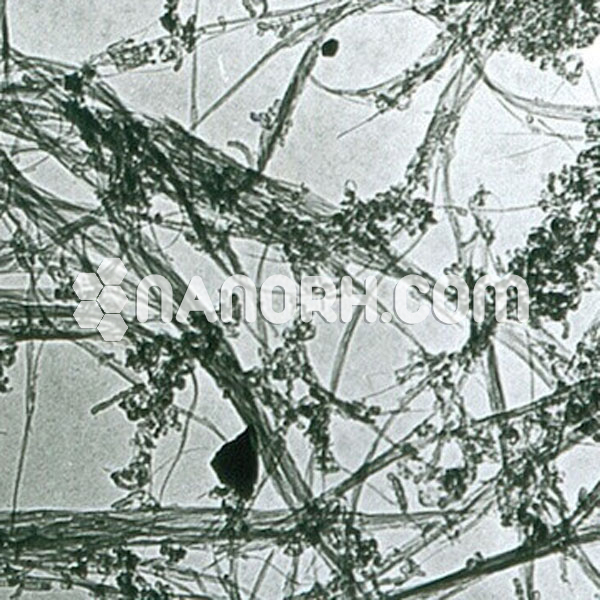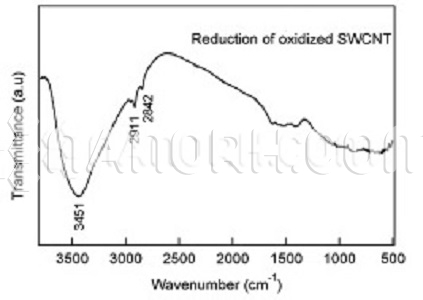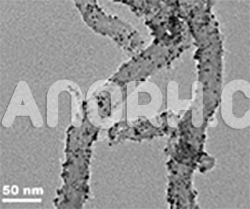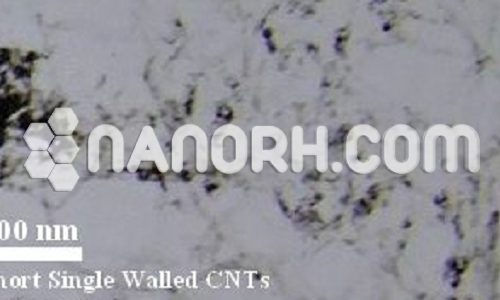| COOH Functionalized Short MWCNTs | |
| Product No | NRE-35001 |
| CAS No. | NA |
| Purity | Carbon nanotubes > 95wt% |
| Average Diameter | 20-30 nm |
| Average Length | 0.5-2 um (TEM) |
| Special Surface Area(SSA) | >110m2/g(BET) |
| Tap Density | 0.28g/cm3 |
| True Density | 2.1g/cm3 |
| Electric Conductivity | > 100 S/cm |
COOH Functionalized Short MWCNTs
Applications:
Nanocomposites:
COOH functionalized short MWCNTs are often used to improve the mechanical, electrical, and thermal properties of polymer composites. The presence of carboxyl groups enhances the interaction between the MWCNTs and the polymer matrix, leading to better dispersion and interfacial bonding.
Energy Storage Devices:
COOH functionalized short MWCNTs are employed in energy storage applications such as supercapacitors, batteries, and fuel cells. Their enhanced surface area and the ability to undergo further functionalization allow for the development of high-performance electrode materials.
Drug Delivery and Biomedical Applications:
Due to their biocompatibility and functionalization with carboxyl groups, COOH-functionalized MWCNTs are used in drug delivery systems. The carboxyl groups can help to conjugate drugs, proteins, or other therapeutic molecules to the nanotubes, facilitating targeted delivery to specific cells or tissues.
Additionally, these nanotubes are explored for imaging applications, biosensors, and in the treatment of cancer through drug loading.
Sensors and Catalysis: CNT can be used as sensitive components in chemical and biosensors. The carboxyl groups can interact with analytes, altering the electrical or optical properties of the CNTs.
In catalysis, these functionalized nanotubes can serve as support materials for metal nanoparticles, enhancing catalytic activity and selectivity.
Water Treatment:
Due to their high surface area and the presence of carboxyl groups, can be used to adsorb heavy metals, organic pollutants, and other contaminants from water, making them promising candidates for water purification applications.
Electronics and Conductive Materials:
The improved dispersion of MWCNTs in conductive polymers and materials results in enhanced electrical conductivity. COOH functionalization helps in creating composite materials for flexible electronics, touch screens, and conductive inks.
Electrochemical Applications:
In electrochemical devices, COOH functionalized MWCNTs serve as excellent electrode materials or as substrates for the deposition of metal or metal oxide nanoparticles.




